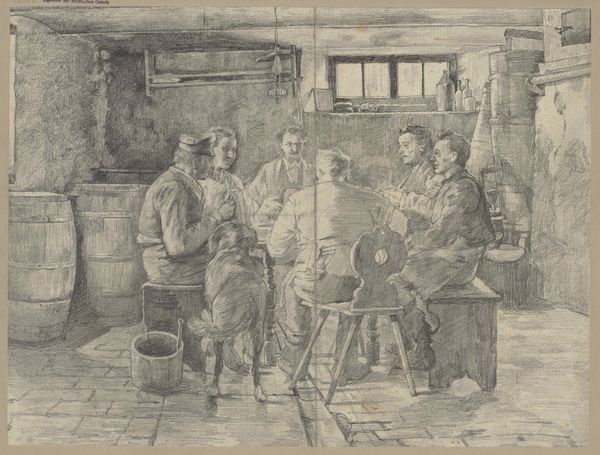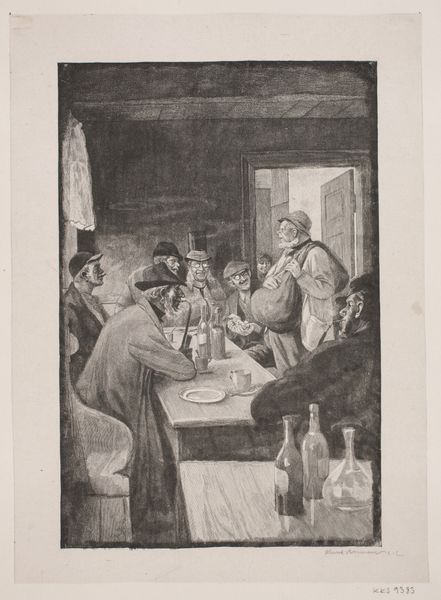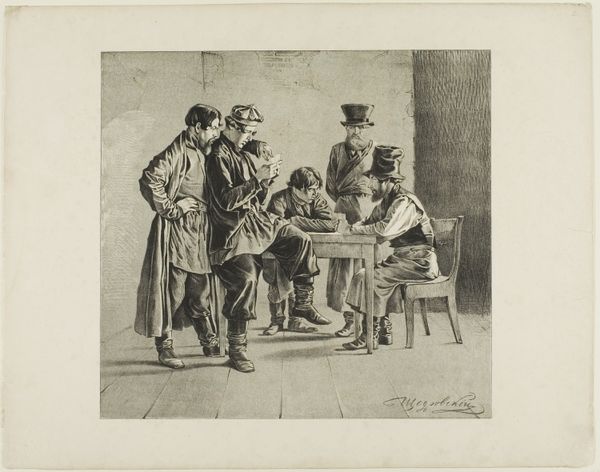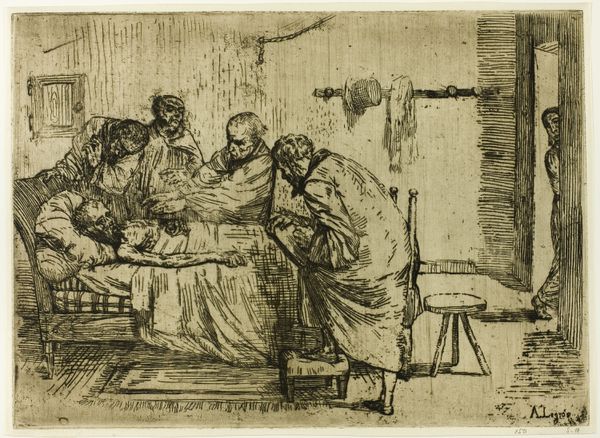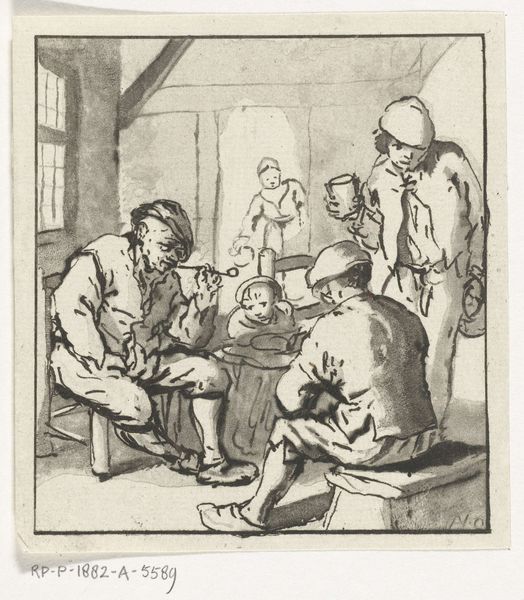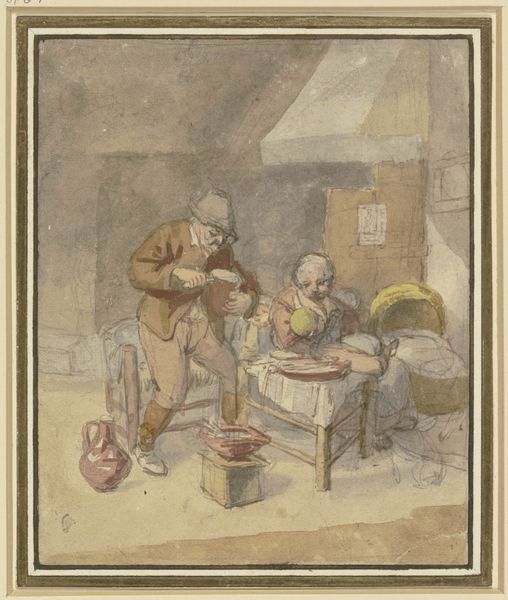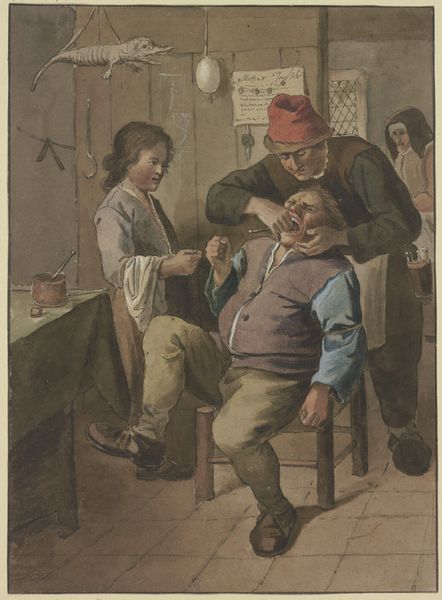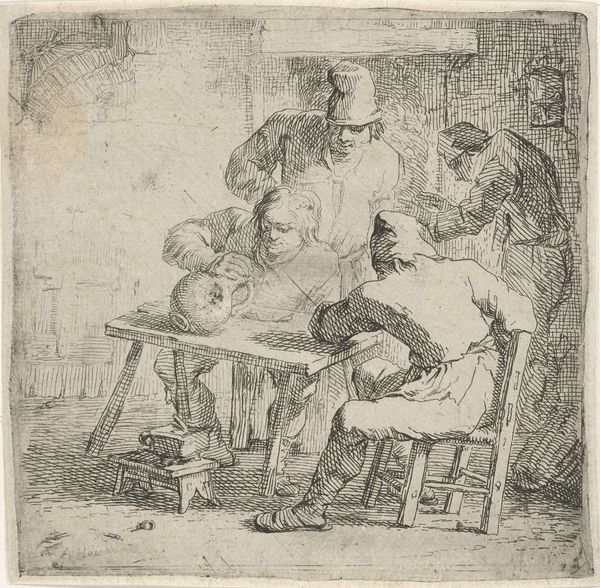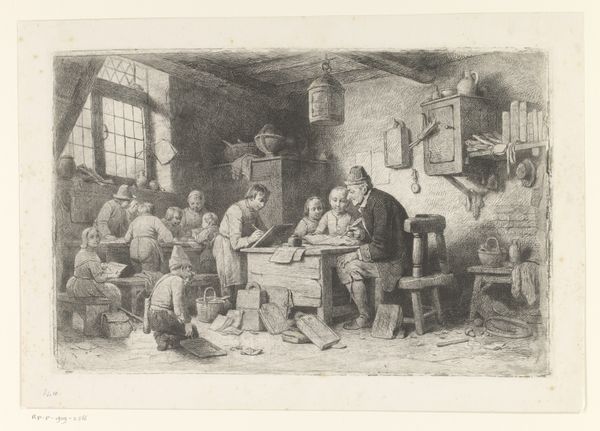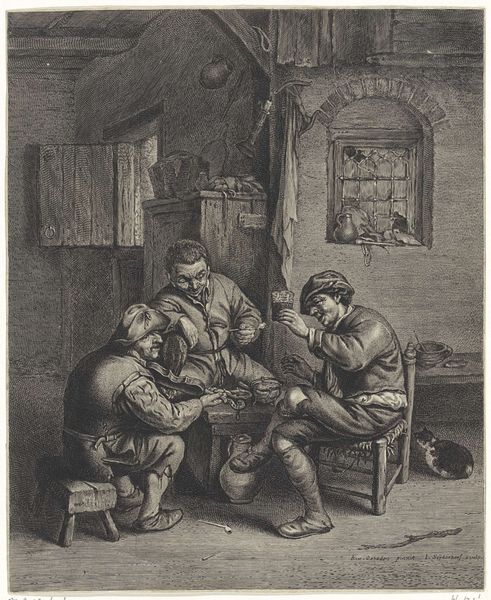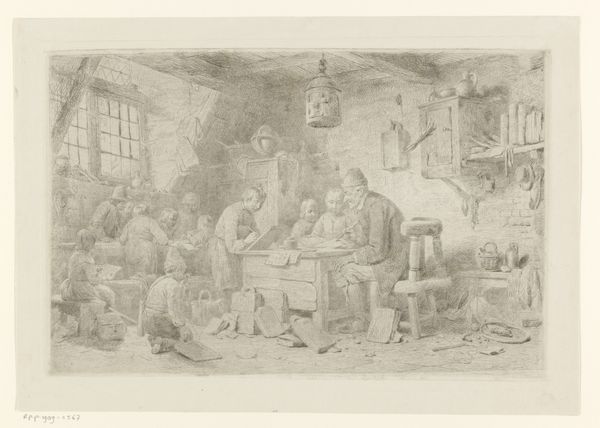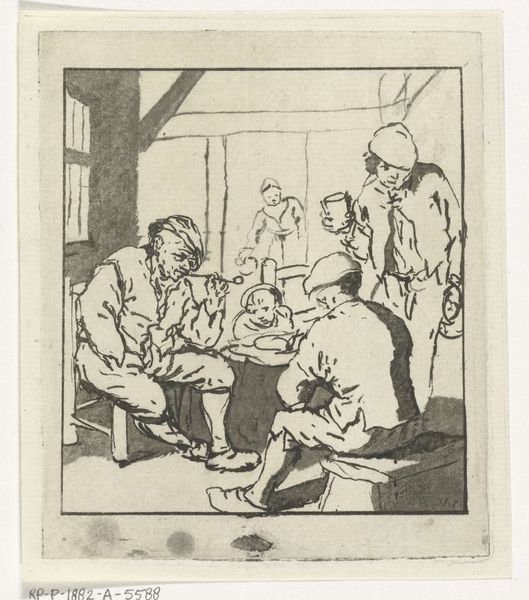
Dimensions: Mat: 12 1/16 in. × 16 in. (30.6 × 40.7 cm) Sheet (trimmed): 9 5/8 × 12 7/8 in. (24.5 × 32.7 cm)
Copyright: Public Domain
Curator: This watercolor and print work, "La soupe à la chambrée" by Jacques Baseilhac, dates to 1898. Currently, it resides here at the Metropolitan Museum of Art. Editor: It’s such an unassuming scene, isn’t it? The muted tones and casual arrangement evoke a very quiet, almost melancholy mood, despite the gathering. There's an air of simplicity. Curator: Absolutely. It captures a sense of everyday life, perhaps among soldiers or workers during that period. Baseilhac frequently depicted scenes reflecting ordinary activities, often imbuing them with subtle social commentary. What draws your attention from a materials perspective? Editor: The concentration of blue within that one large bowl amidst such pale watercolor hues fascinates me. The rest almost seems unfinished in places, heightening that sense of labor and material scarcity... or maybe highlighting what was deemed worthy of deeper coloring! Consider also, that these materials would have been relatively accessible. This work opens up inquiries about available supplies and how those limitations may have dictated artistic expression for many at the time. Curator: That’s a fascinating perspective. And in its own right, "genre painting," which attempts to offer vignettes of various contemporary class experiences as subject matter. Baseilhac has several known group portraits and genre-driven themes within his broader portfolio of exhibited work, allowing one to think about audience accessibility during exhibitions, or at the site of its present museum context. Editor: Do you mean that perhaps Baseilhac’s rendering provides us an avenue for contemplating class consciousness as it relates to consumption of labor--even artistic labor--during his moment? Curator: Precisely. It beckons conversations concerning audience reception too, especially today when viewed in light of twenty-first century globalized economic disparity. What else intrigues you in relation to the materials or making? Editor: The quickly applied watercolors suggest immediacy in production. Almost journalistic—with possible ties, through print, to democratized consumption through circulated image and knowledge. Baseilhac gives us visual shorthand through these production elements. What implications are offered to our audiences who stand here today? Curator: Yes! Consider also, we still view it framed behind glass; in fact, many probably consume a similar scene via various screens on any given day. How have we moved from then until now to grant new meanings, even interpretations on class status or economic mobility? The scene and its visual representations continue to challenge how such paintings get viewed by diverse museum-going audiences, which perhaps still evokes those same complicated responses about inequality. Editor: I completely agree. From a materialist reading, seeing labor processes and social stratifications embedded through production pushes my thinking further beyond this present setting!
Comments
No comments
Be the first to comment and join the conversation on the ultimate creative platform.
